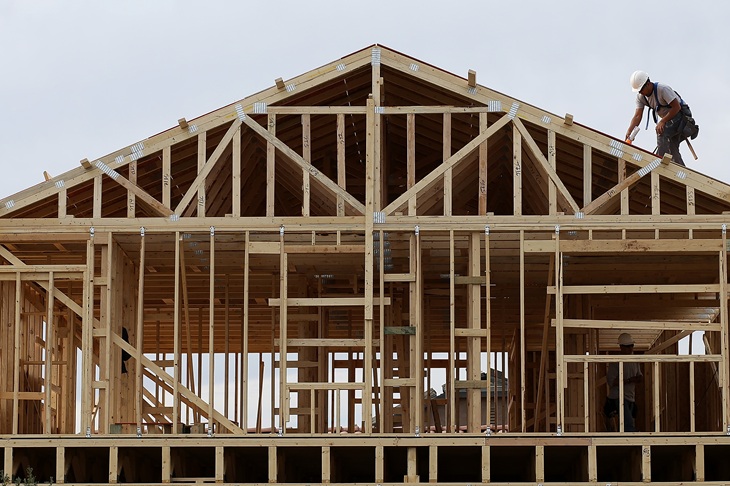
PHOENIX, AZ - MARCH 05: A worker climbs on the roof of a home under construction at the Pulte Homes Fireside at Norterra-Skyline housing development on March 5, 2013 in Phoenix, Arizona. In 2008, Phoenix, Arizona was at the forefront of the U.S. housing crisis with home prices falling 55 percent between 2005 and 2011 leaving many developers to abandon development projects. Phoenix is now undergoing a housing boom as sale prices have surged 22.9 percent, the highest price increase in the nation, and homebuilders are scrambling to buy up land. (Photo by Justin Sullivan/Getty Images)
UPDATE: Australia is grappling with a severe housing crisis as prices continue to escalate, driven by increasing demand from mass immigration and restrictive urban planning policies. Recent reports highlight that the federal government’s $10 billion Housing Australia Future Fund aims to address these challenges but has only resulted in a planned 18,500 new homes, falling drastically short of the 640,000 households currently facing unmet housing needs.
The urgency of this situation cannot be overstated. With rising living costs, more Australians are finding it increasingly difficult to secure affordable housing. A growing sentiment among citizens points fingers at immigration, with 34 percent citing it as a significant factor in the housing affordability crisis, according to recent surveys. This concern is particularly pronounced among 72 percent of One Nation supporters.
Authorities confirm that while immigration numbers are well-documented, the real issue lies in the failure to increase housing supply. New research reveals that the rate of new dwellings per thousand people has nearly halved since the 1960s. Despite the construction of new homes remaining non-unionized and inflation-adjusted costs declining, the urban planning regime in Australia significantly restricts land availability for housing development.
Currently, 90 percent of Australians reside in merely 0.22 percent of the country’s total land area designated as urban. The average cost of a housing block has surged from approximately $100,000 in the 1960s to a staggering $525,000 today. The land component now accounts for over 60 percent of the total price of a new home.
According to assessments by Demographia, all major Australian capitals rank among the 15 most expensive cities globally for housing affordability. In contrast, many U.S. cities, such as Atlanta and Dallas Fort Worth, are experiencing significant population growth without corresponding pressure on house prices, primarily due to less stringent planning regulations.
The consequences of Australia’s planning constraints are evident. These outdated policies, modeled after British regulations designed for countryside preservation, have stifled urban growth. Regulatory inertia complicates efforts to reverse these detrimental impacts, leaving recent homebuyers—especially those who leveraged the government’s 5 percent down payment initiative—vulnerable to potential price falls.
As this crisis unfolds, the implications for thousands of Australian families are dire. Without swift action to address both supply and affordability, the dream of homeownership may slip further out of reach for many. The government must act urgently to reform urban planning policies and incentivize new housing developments to alleviate the burden on future generations.
Stay tuned for further updates as this situation develops and the impacts on the Australian housing market become clearer.





